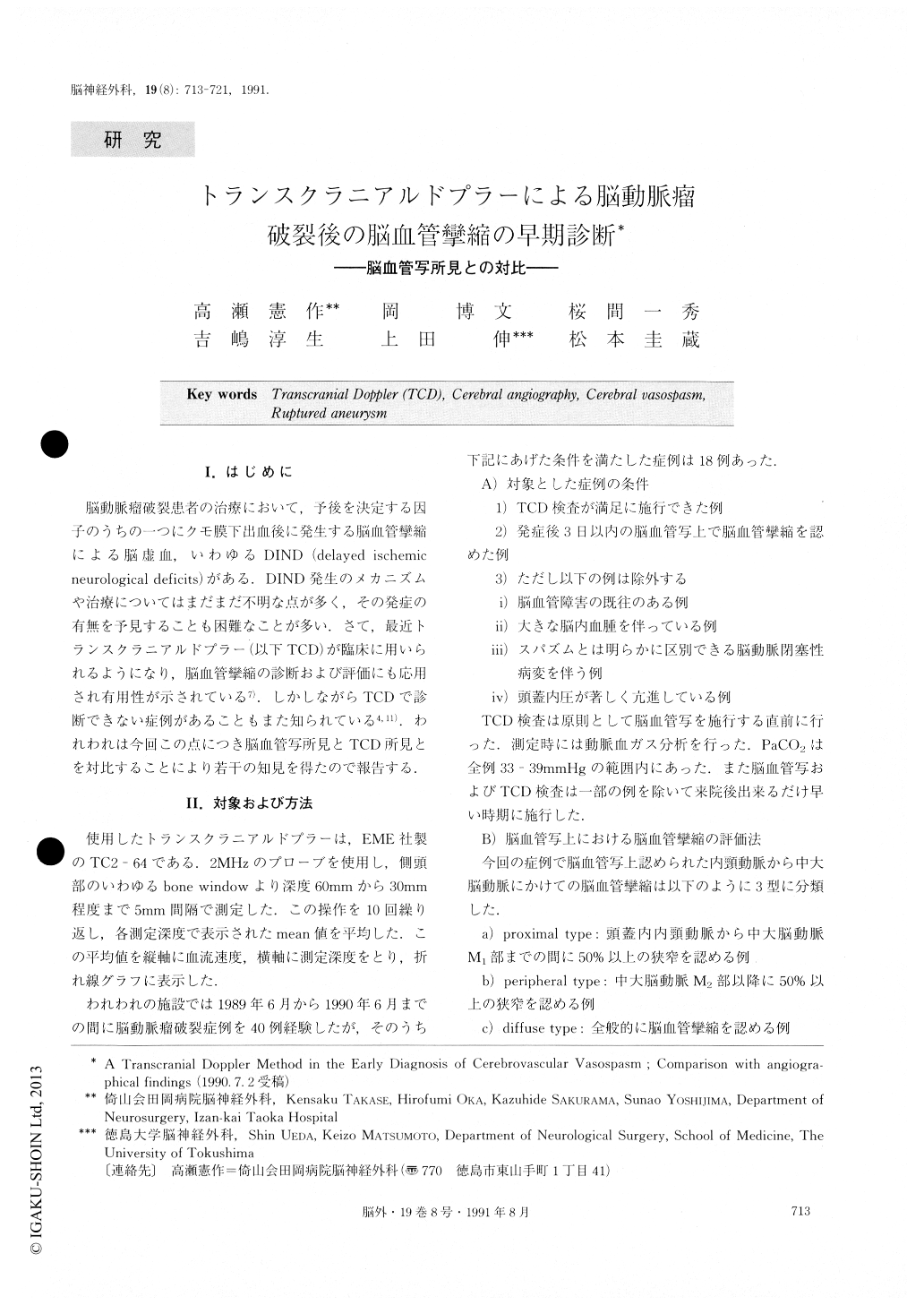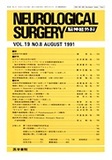Japanese
English
- 有料閲覧
- Abstract 文献概要
- 1ページ目 Look Inside
I.はじめに
脳動脈瘤破裂患者の治療において,予後を決定する因子のうちの一つにクモ膜下出血後に発生する脳血管攣縮による脳虚血,いわゆるDIND(delayed ischemicneurological deficits)がある.DIND発生のメカニズムや治療についてはまだまだ不明な点が多く,その発症の有無を予見することも困難なことが多い.さて,最近トランスクラニアルドプラー(以下TCD)が臨床に用いられるようになり,脳血管攣縮の診断および評価にも応用され有用性が示されている7).しかしながらTCDで診断できない症例があることもまた知られている4,11).われわれは今回この点につき脳血管写所見とTCD所見とを対比することにより若干の知見を得たので報告する.
Abstract
Cerebral angiography (CAG) and transcranial Dop-pler (TCD) were performed at the same time in 18 pa-tients with ruptured aneurysms within 1-3 days after onset, and the results were compared. Delayed ischemic neurological deficits (DIND) accompanying vascular spasm were detected in 8 patients, but three of the 8 patients recovered from the DIND within about 2 weeks. The CAG findings were classified into the fol-lowing 3 types : (1) diffuse type showing generalized spasm of intracranial arteries (8 patients) , (2) proximaltype with spasm in the distal part of the internal caro-tid arteries and/or proximal middle cerebral arteries (5 patients) and (3) peripheral type showing spasm in the peripheral part of the middle cerebral arteries (5 patients) . The TCD findings could be classified into (a) high pattern type, in which the blood flow velocity had increased (13 cases) , (b) paradoxical pattern type, in which the blood flow velocity was faster in the more peripheral regions (2 cases) , and (c) normal pattern type (3 cases).
All 13 patients classified as diffuse type (8 patients) or proximal type (5 patients) in terms of the CAG find-ings showed a high pattern in TCD, indicating that TCD is also capable of diagnosing vasospasm. On the other hand, two of the 5 patients with peripheral type also showed the paradoxical pattern while the remain-ing 3 showed the normal pattern in TCD. DIND was detected in 6 of the 15 patients with a high or para-doxical pattern in TCD. Thus, it was concluded that the TCD was comparable to CAG in patients in whom the vasospasm was more severe in a more peripheral region. DIND was also found in 2 of the 3 normal pat-tern patients.
It was thus learned that DIND may occur even if the TCD findings are normal, and that such DIND may be indicative of the presence of severe vasospasm of the peripheral branches of the middle cerebral artery. We concluded that even if the TCD is negative for vasos-pasm, diagnosis should be made carefully, with consi-deration also being given to the CAG findings.

Copyright © 1991, Igaku-Shoin Ltd. All rights reserved.


